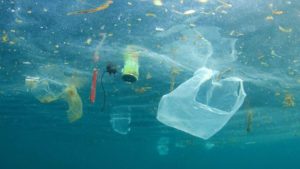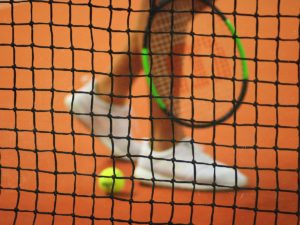
The landscape of our Apennines is beautiful and to preserve it you need to pollute as little as possible. In this article we are going to give you some advice on how to do it. We are going to talk about the world of packaging and materials with which food comes into contact. In recent years the topic of packaging has become enormously important and much attention is being paid to the pollution of the seas, where huge amounts of rubbish float. The planet isn’t anymore able to manage the quantity of plastic that we are producing, and a new “trend” is the one of “free-packaging”. This new trend offers the possibility to buy food without packaging. Many are the firms that are moving in this direction to reduce plastic. One of the advantages of free-packaging shops is that they allow customers savings of up to 15%: indeed products without packaging are cheaper. Nowadays people often speak about the movement “zero waste”, which consists in completely removing packs and packagings. This is an almost impossible mission, but we can still lower waste and use of plastic and other materials.

What could we do to improve our habits? Here’s some advice:
● go grocery shopping in biological free-packaging shops
● do less disposable purchases, therefore choosing a bigger package rather than more individual ones.
● reuse containers for unpackaged shopping, for example jars. These are microscopic gestures that could make a difference.
Even in the world of sport they have decided to fight the use of plastic.

Last year, in the tennis world, Wimbledon said no to plastic. This allowed a reduction in the use of plastic to increase sustainability. The first plastic which was prohibited was that of the rackets cover. In the past editions it was normal to see players pulling out their rackets from plastic bags,which were then immediately thrown away. But that isn’t all. The Wimbledon fight against plastic was also supported by Evian water, one of the tournament’s sponsors, which in last year’s edition presented its first completely recyclable plastic bottle made of recycled materials.
The club also chose packagings for fruit and ice cream made of up to 70% of recycled plastic and disposable plastic straws were banned. Several participants have taken part in the plastic reduction, especially on the clothing front. Also important names opted for sustainability: the Adidas outfit designed by Stella McCartney was made with plastic recovered from the sea.
Aya Essadiki, Mariavittoria Albertini e Matteo Manfredi
****
Traduzione:

In questo articolo parleremo del mondo del packaging e dei materiali a contatto con gli alimenti. Da qualche anno il tema del packaging è diventato di enorme attualità e viene posta molta attenzione verso l’inquinamento dei mari, dove galleggiano enormi quantità di rifiuti. Il pianeta non è più in grado di gestire la quantità di plastica che produciamo e un nuovo “trend” è quello del free-packaging. Questo ci offre la possibilità di comprare alimenti senza imballaggi. Sono molte le aziende alimentari che si stanno muovendo in questa direzione per ridurre la plastica. Uno dei tanti vantaggi dei negozi free-packaging è il risparmio di circa il 15%, infatti i prodotti senza imballaggi sono più economici. Oggigiorno si parla spesso del movimento “zero waste”, che consiste nell’eliminare del tutto le confezioni e gli imballaggi. Questa è una missione quasi impossibile, ma si può comunque diminuire lo spreco e l’utilizzo della plastica e altri materiali.
Cosa si potrebbe fare per migliorare le nostre abitudini? Ecco alcuni consigli:
● fare la spesa in negozi biologici free-packaging;
● fare meno acquisti usa e getta, quindi preferire una confezione più grande rispetto a tante singole confezioni;
● riutilizzare i contenitori per la spesa sfusa, come ad esempio i barattoli. Questi sono dei gesti microscopici che possono fare la differenza.
Anche nel mondo dello sport hanno deciso di combattere l’utilizzo della plastica. L’anno scorso nel mondo del tennis Wimbledon ha detto no alla plastica, una presa di posizione in favore della sostenibilità che ha permesso di ridurre di molto i rifiuti. Il primo imputato è la copertura delle racchette in plastica, bandite quest’anno dall’AELTC. Nelle edizioni passate era normale vedere i giocatori estrarre le proprie racchette da sacchetti di plastica, poi subito scartati. Ma non è tutto. La lotta di Wimbledon contro la plastica è stata supportata anche dall’acqua Evian, uno degli sponsor del torneo, che nell’edizione di quest’anno ha provveduto a presentare la sua prima bottiglia di plastica completamente riciclata e riciclabile. Il club inoltre ha scelto le confezioni per frutta e gelati fatte per il 70% di plastica riciclata, mentre già dall’anno scorso erano state vietate le cannucce in plastica monouso. Sono diversi i partecipanti che hanno preso parte alla riduzione della plastica, specialmente nell’abbigliamento. Sono anche stati diversi i nomi che hanno optato per un outfit sostenibile, ovvero completi Adidas firmati da Stella McCartney prodotti con la plastica recuperata dal mare.
Aya Essadiki, Mariavittoria Albertini e Matteo Manfredi








Bravi ragazzi!
D.C.
Well done!?
MM
Your job is very good!
S.M.